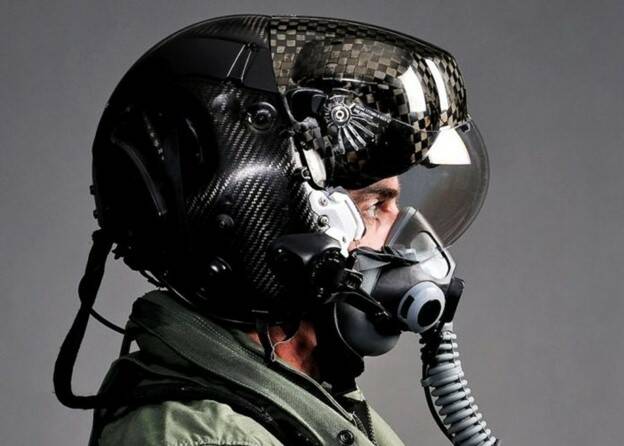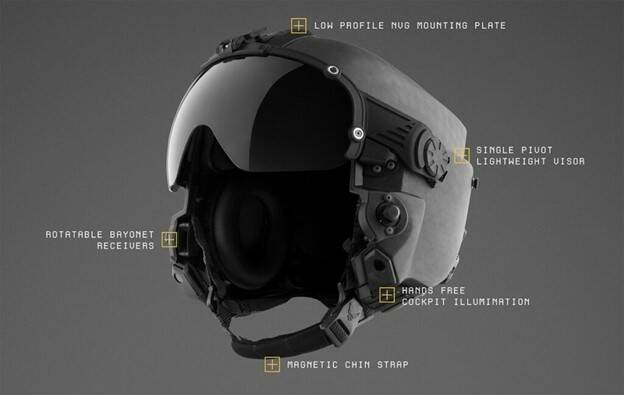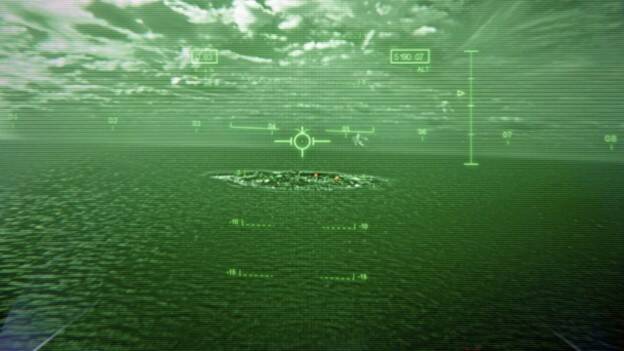Top Gun: the Latest in Military Flight Helmets with Head-Up Displays
Back in 2019, we wrote about the F-35 Joint Strike Fighter helmet, which at the time was brand new and represented the most advanced military aviation helmet ever built. Read about it in this post, which has since become Radiant’s most-read blog post of all time. Three years later, the F-35 helmet is still considered state-of-the art in military aviation, as spotlighted in this recent article in The Modern Battlespace magazine. It “offers unparalleled situational analysis, visual accuracy, and flight safety.”1

The F-35 helmet. (Image © Collins Aerospace)
The F-35 helmet will soon be joined by a new “Next Generation Fixed Wing Helmet”2 for use with the F-15E and all other fixed-wing aircraft except the F-35. The new AV 2.2 helmet design from California-based LIFT Airborne Technologies has been selected by the U.S. Air Force and is expected to be ready to go into production in 2024 following development and field testing.
Made from strong yet lightweight carbon fiber material that will improve ergonomics and comfort for pilots, especially female pilots who typically wear smaller sized helmets than their male counterparts, yet still outfitted with all the same weight of display, vision, and communication systems that can change the center of gravity.

The U.S. Air Force has made a final selection for a next generation fixed-wing helmet system stemming from an industry challenge first launched in 2019. Pictured here is the winner of the competition, the AV2.2 helmet. (Photo © LIFT Technologies)
Ensuring HUD Quality & Performance
To ensure that HUDs are serving their intended purpose, there are multiple considerations—design, form factor, symbology, display quality—that must be carefully addressed. Pilots rely on vision to obtain more than 90% of the information relevant to flying an aircraft.3 This means that any cockpit display system must be attuned to the science of human visual perception.
HUDs must be evaluated as they will be seen by human users. For example, HUD projections must be tested for proper alignment and in-focus binocular viewing, since the visual processing system in our brains combines two slightly different images captured by each eye.
Additionally, light and color of projected information must be vivid enough to be clearly discernible from background surroundings in any lighting condition. Low-quality projections put aircraft at risk if operators are unable to interpret poorly projected objects in the viewing area of the display. This can lead to misinterpretation, loss of critical environmental data (such as navigation, object proximity, and other alerts), and pilot distraction.
For example, while developing the F-35 helmet, engineers at Rockwell Collins had to find ways to address visual issues with the HUD display. In nighttime use test pilots were sometimes seeing a “blooming” effect or greenish haze that impaired visibility. The development team determined the effect was being caused by bleed-though of some of the backlight for the LCD screen used for the HUD display. Switching to an OLED self-illuminating display solved the issue.

A pilot's-eye view of from the F-35 helmet HUD approaching an aircraft carrier (Image Source: K2 Communications Inc.)
To accurately assess the critical visual qualities of a HUD, a rigorous inspection regimen is needed that incorporates photometric or colorimetric measurement and dimensional inspection with a close match to human visual perception. An optical (image-based) measurement device and complementary test and measurement software can be used to inspect HUD projections for a range of visual criteria, and at several points within the eyebox area (to account for the scope of potential viewing angles).
Radiant Vision Systems has provided the leading solutions for conventional display, near-eye-display (NED), and HUD testing in consumer electronics, automotive, and aerospace industries, with equipment advantages that optimize testing speed and simplicity. Our ProMetric® Imaging Photometers and Colorimeters are designed to simulate human visual perception of light and color (based on standard CIE color-matching functions). Systems include benefits for automated HUD measurement such as electronic lenses and dynamic calculation of virtual image distance.
Our TT-HUD™ Software offers manufacturers a HUD test library, API, SDK, and automated pass/fail test sequencing to ensure the quality and performance of aviation HUD displays. To learn more about aviation HUD design and quality assurance considerations, read the article “Quality Considerations for Aviation Head-Up Displays (HUDs)”, published in Aviation Today.

CITATIONS
- Schraden, R., “The F-35 Helmet – a Modern Marvel That Creates a Unique Maintenance Challenge”, The Modern Battlespace, June 15, 2022.
- Wolfe, F., “US Air Force Picks LIFT Airborne Technologies’ Helmet for Fixed Wing Aircraft”, Avionics International, July 1, 2022.
- Nichol, R. J., “Airline Head-Up Display Systems: Human Factors Considerations”, International Journal of Economics & Management Sciences, 2015, Vol 4:5. DOI: 10.4172/2162-6359.1000248
- Zazulia, N., “F-35: Under the Helmet of the World’s Most Advanced Fighter”, Avionics International, August 24, 2018.
Join Mailing List
Stay up to date on our latest products, blog content, and events.
Join our Mailing List
